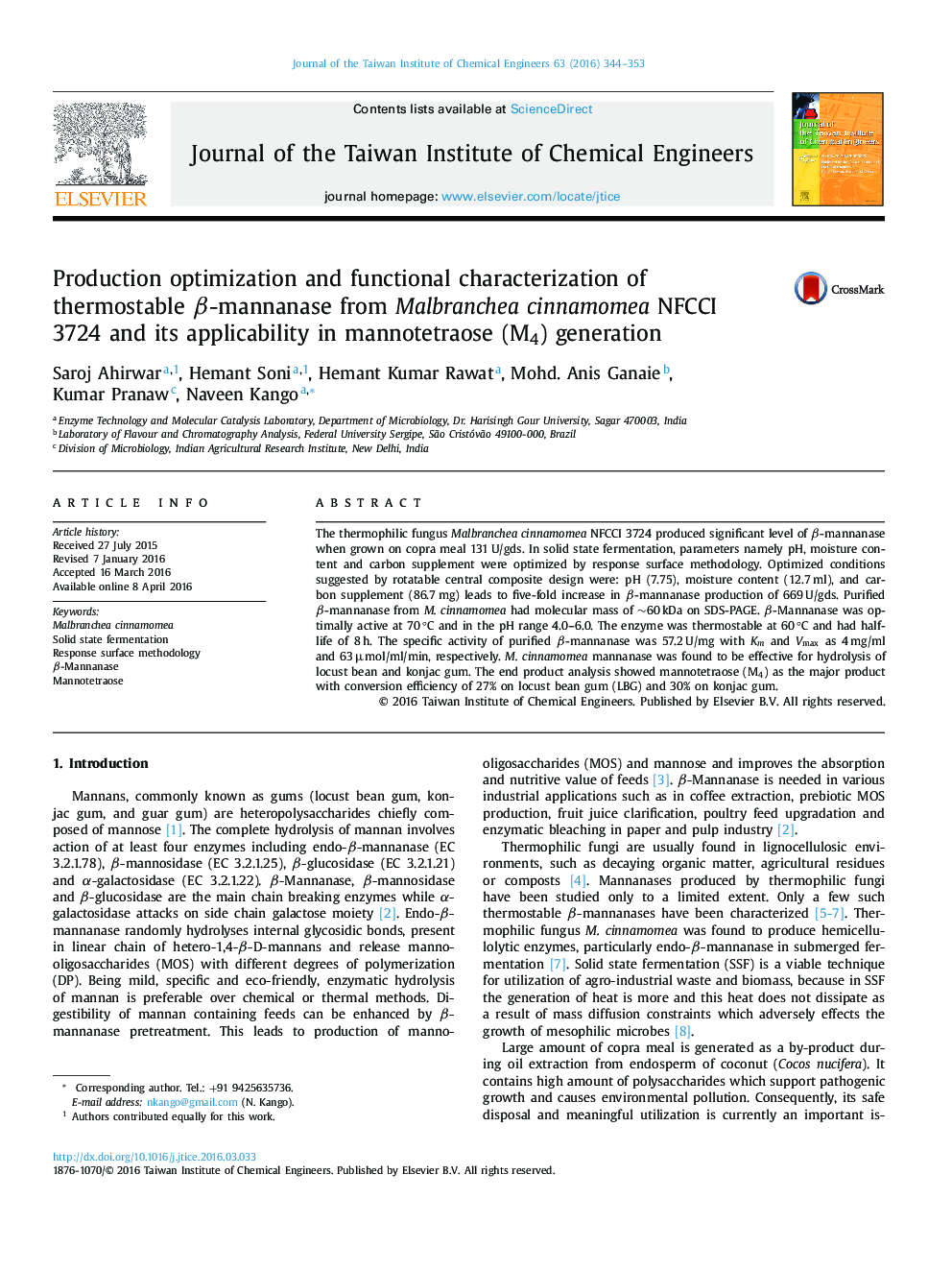| Article ID | Journal | Published Year | Pages | File Type |
|---|---|---|---|---|
| 690421 | Journal of the Taiwan Institute of Chemical Engineers | 2016 | 10 Pages |
•Thermophilic M. cinnamomea produced mannanase on copra meal.•Optimized production lead to 5 fold increase (669 U/gds).•β-Mannanase from M. cinnamomea was purified (∼60 kDa).•Mannanase generated mannotetraose (M4) from linear and branched mannan.
The thermophilic fungus Malbranchea cinnamomea NFCCI 3724 produced significant level of β-mannanase when grown on copra meal 131 U/gds. In solid state fermentation, parameters namely pH, moisture content and carbon supplement were optimized by response surface methodology. Optimized conditions suggested by rotatable central composite design were: pH (7.75), moisture content (12.7 ml), and carbon supplement (86.7 mg) leads to five-fold increase in β-mannanase production of 669 U/gds. Purified β-mannanase from M. cinnamomea had molecular mass of ∼60 kDa on SDS-PAGE. β-Mannanase was optimally active at 70 °C and in the pH range 4.0–6.0. The enzyme was thermostable at 60 °C and had half-life of 8 h. The specific activity of purified β-mannanase was 57.2 U/mg with Km and Vmax as 4 mg/ml and 63 µmol/ml/min, respectively. M. cinnamomea mannanase was found to be effective for hydrolysis of locust bean and konjac gum. The end product analysis showed mannotetraose (M4) as the major product with conversion efficiency of 27% on locust bean gum (LBG) and 30% on konjac gum.
Graphical abstractFigure optionsDownload full-size imageDownload as PowerPoint slide
